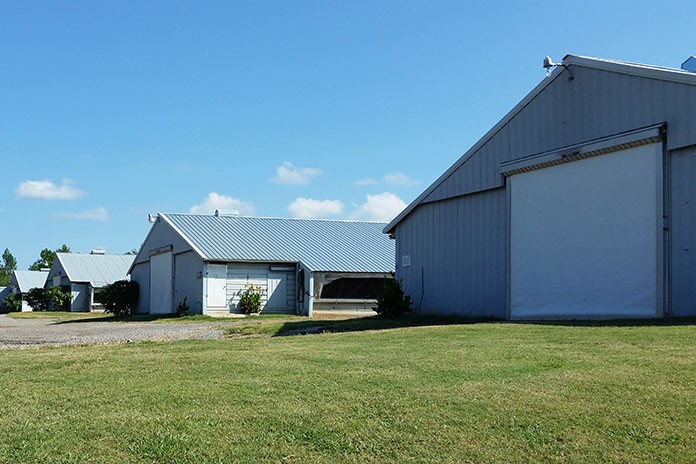
Wet litter is a recognized issue in commercial poultry production and litter quality has come under great scrutiny with the introduction of farming scheme standards by animal welfare organizations in Australia.
According to RSPCA (2013) meat chicken standards, “litter must be maintained in a dry and friable condition”. Litter conditions may affect odour emissions and thus litter properties were studied to correlate with specific odorants.
Two experiments to assess litter quality
Two experiments were conducted using Ross 308 male broiler chickens raised in floor pens with fresh pine shavings (10.4 kg/pen) as bedding material. On d 0, the birds were placed in 16 pens with 12 birds (experiment 1) and 10 birds (experiment 2) per pen.
Diets contained the same levels of metabolizable energy (ME) (starter/grower/finisher: 12.3/12.8/13 MJkg-1) and digestible amino acids but differed in the levels of crude protein, salt and types of feed additives (antibiotic, probiotic and saponin).
Experiment 1
In experiment 1, approximately 10 g of litter were sampled from each pen on d 29 to measure litter moisture and litter water activity (Aw) using tuneable diode laser water activity meter (AquaLab-TDL, USA). On d 35, a sample of surface litter from under the flux hood was collected from each pen to measure litter moisture and odorants using a selective ion flow tube mass spectrometer (SIFT-MS). Pearson correlation coefficients and associated significance were generated using JMP software to determine the relationship between litter moisture and odorants.
The relationship between litter moisture and Aw was determined by exponential regression analysis.
Experiment 2
In experiment 2, 25 litter samples were collected from the pens from d 25 to d 30 and analyzed for pH and moisture contents. Litter pH was determined by mixing litter and de- ionised water in a ratio of 1:5 and measuring the pH with a pH meter (EcoScan 5/6 pH meter, Eutech Instrument Pte. Ltd., Singapore).
The results showed that methyl mercaptan (r = 0.453, P < 0.01), hydrogen sulfide (r = 0.482, P < 0.01), dimethyl sulfide (r = 0.621, P < 0.01), trimethylamine (r = 0.526, P < 0.01), phenol (r = 0.409, P < 0.05), indole (r = 0.503, P < 0.01) and skatole (r = 0.344, P < 0.05) had significant positive correlations with litter moisture.
Dimethyl disulfide tended to be positively correlated with litter moisture (r = 0.316, P = 0.061) and methylamine (r = -0.309, P = 0.086), propionic acid (r = -0.318, P = 0.072) and butanoic acid (r = -0.318, P = 0.072) tended to be negatively correlated with litter moisture. There was no correlation between litter moisture and odorants belonging to the group of alcohols, aldehydes and ketones. There was an exponential relationship between litter moisture and Aw values on d 29 (r2 = 0.938, P < 0.01). Aw increased until it reached a value of 1.0 at a litter moisture of approximately 50%. There was a negative linear relationship between litter moisture and litter pH (r2 = 0.54, P < 0.01).
Conclusions
In conclusion, a high litter moisture increased water activity and favoured the emissions of sulfur containing odorants, trimethylamine, phenol, indole and skatole over others. As litter moisture increased, litter pH decreased, which implies that low litter pH associated with high litter moisture may favour the emissions of sulfur containing odorants.
From the proceedings of the Australian Poultry Science Symposium
















